
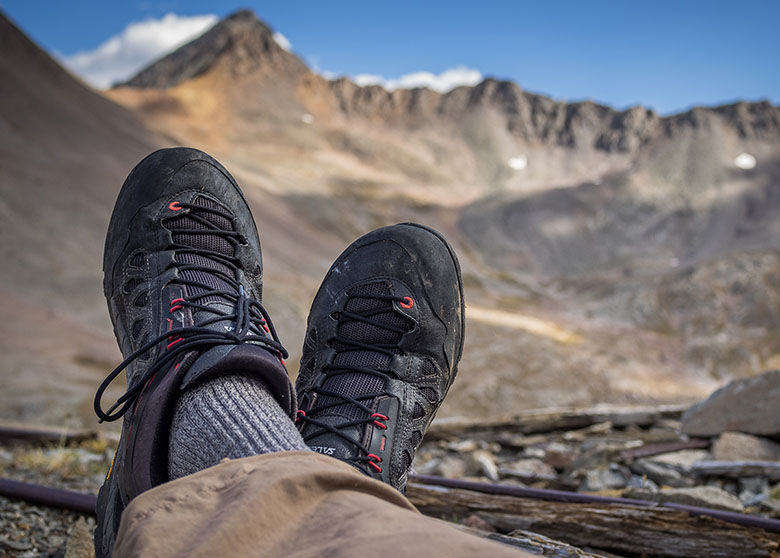
Salewa isn’t yet a household name, but the company has a serious following among the climbing community and those who like to get into the alpine. Their Firetail 3 GTX is an approach shoe that is robust, functional, and built to last. Tested in areas ranging from the rocky terrain of the San Juan Mountains to the wet wilds of Alaska, we put our Firetail 3’s through their paces and came away impressed. The Vibram sole performed as touted, helping us feel totally secure while scrambling up steep terrain. And we have high praise for the Firetail 3’s ruggedness and ability to withstand abuse. Many a shoe would have succumbed long ago, but these remain ready for yet another adventure. Below we break down the Firetail 3 GTX’s traction, toe box, lacing system, waterproofness, fit and sizing, and more. To see how the Firetail 3 stacks up, check out our articles on the best approach shoes and lightweight hiking shoes.
The Firetail 3 GTX is designed to be a serious approach shoe for the vertical world. Similar to many of its competitors, Salewa uses a Vibram sole for grip over rocky terrain, which is lugged in all but the crucial climbing areas of the shoe (the inside and outside of the toe area are smooth for better edging capabilities). All in all, I found the sole and rubber to be extremely effective. It was grippy while traversing the Via Ferrata outside of Telluride, allowing me to edge with confidence. And the shoe even held its own when hiking with a fully loaded bike across wet and kelp covered rocks along the southeast coast of Alaska. Most people wouldn’t use such shoes for this type of terrain, but I did and it was a testament to how the Firetail 3 performed in an extreme and “out of their element” scenario. No matter the conditions, I felt secure and confident.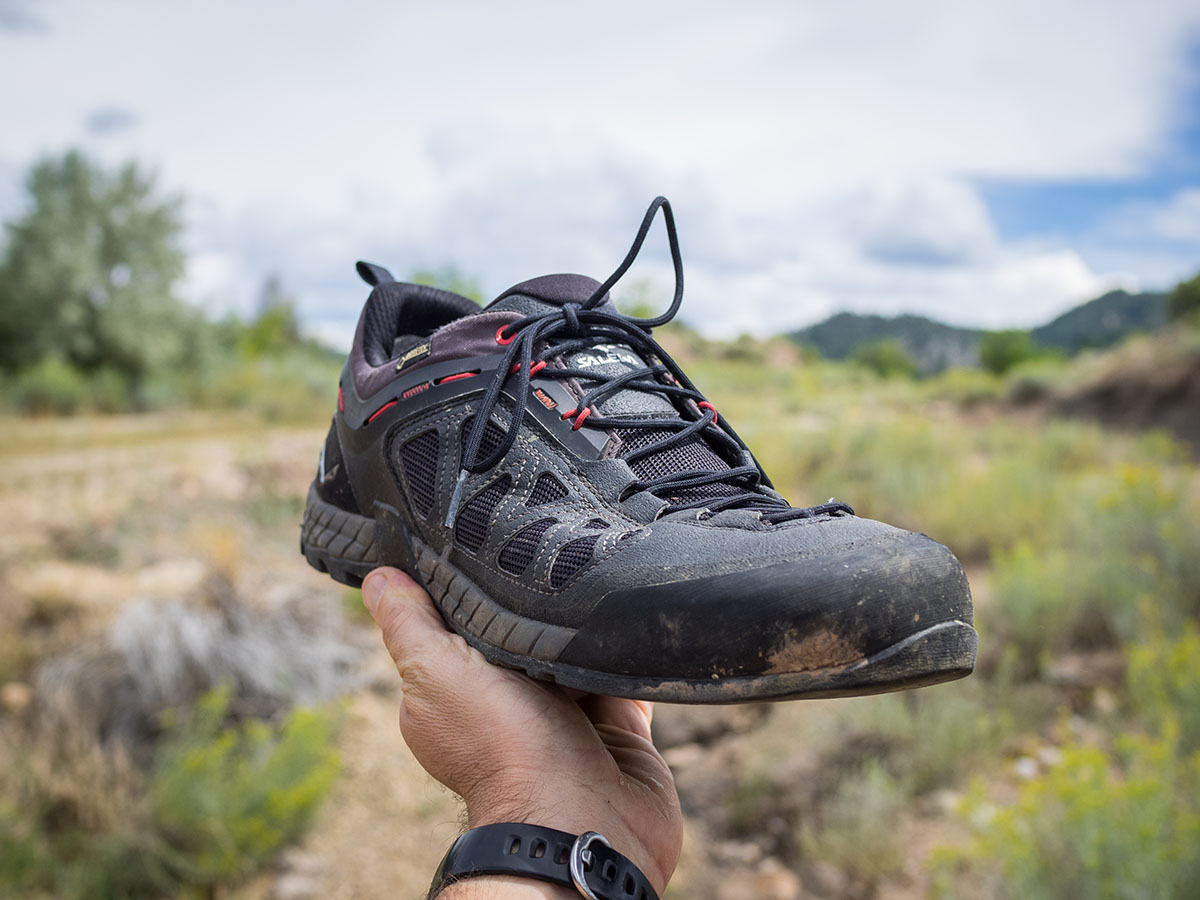
As mentioned above, the Firetail 3 offers superb traction. But if you tend to find yourself in desert environments where cracks reign supreme, this shoe may not be the best option for you (in those situations, we prefer the Five Ten Guide Tennie). In particular, the toe box is larger and more rounded off than many other approach shoes. This square toe box provides exceptional comfort even when the lacing system is engaged for optimal climbing performance. It does, however, limit the functionality of the shoe when torqueing on the toe while scaling a crack or making other precise moves involving the toe box. The large toe box does offer an advantage when having to kick up short sections of snow to get to the base of your alpine climb. On multiple occasions, we found the Firetail 3 GTX to be extremely effective in this capacity. But as a crack climbing approach shoe, it falls short.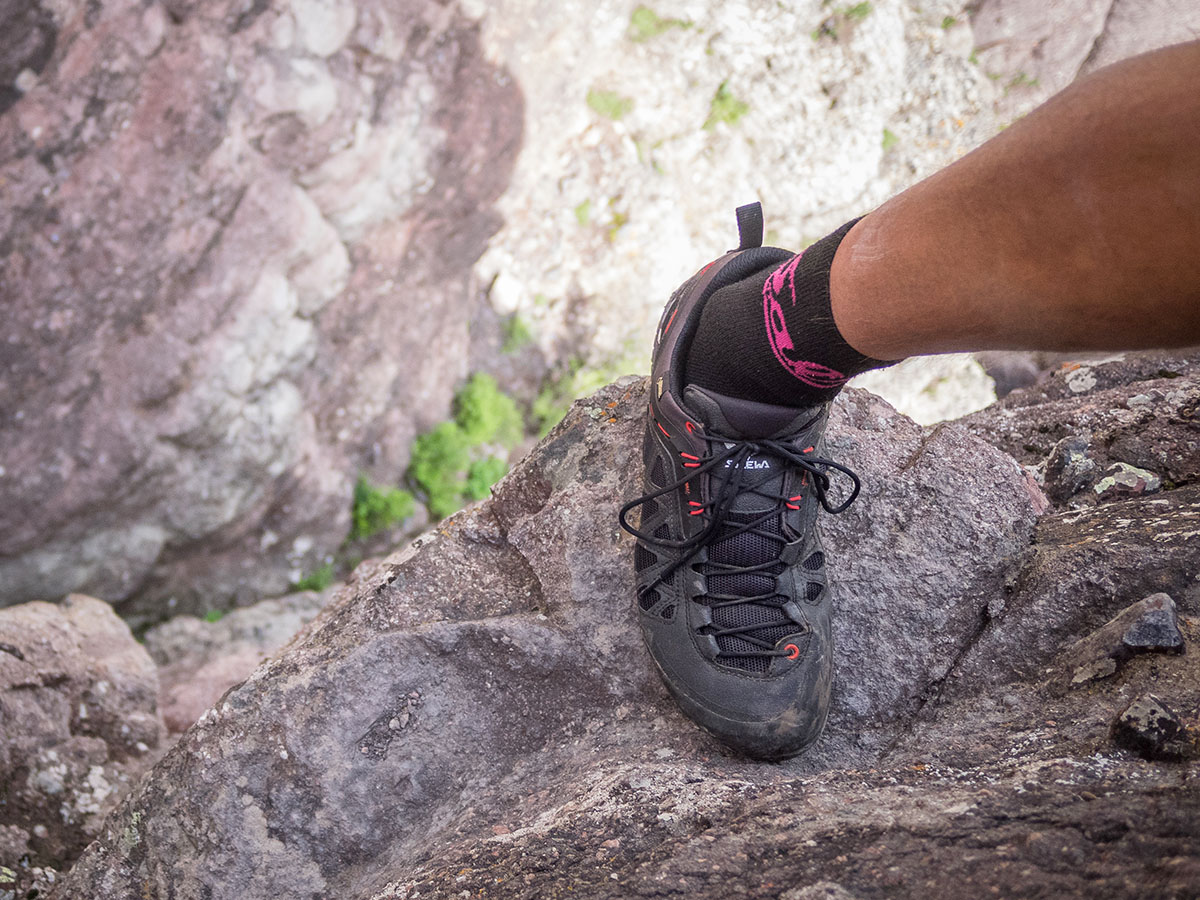
One of the highlights of this shoe is its lacing system, which functions similarly to a climbing shoe. The laces extend from the top of the shoe near the ankle all of the way to the toes. This system is common on approach shoes and allows for the ability to fine tune and make micro adjustments for a premium fit. More, the laces tighten easily to provide security to the foot where needed. If you’re a climber who doesn’t want to compromise on fit, you won’t have to make many sacrifices with the Salewa Firetail 3.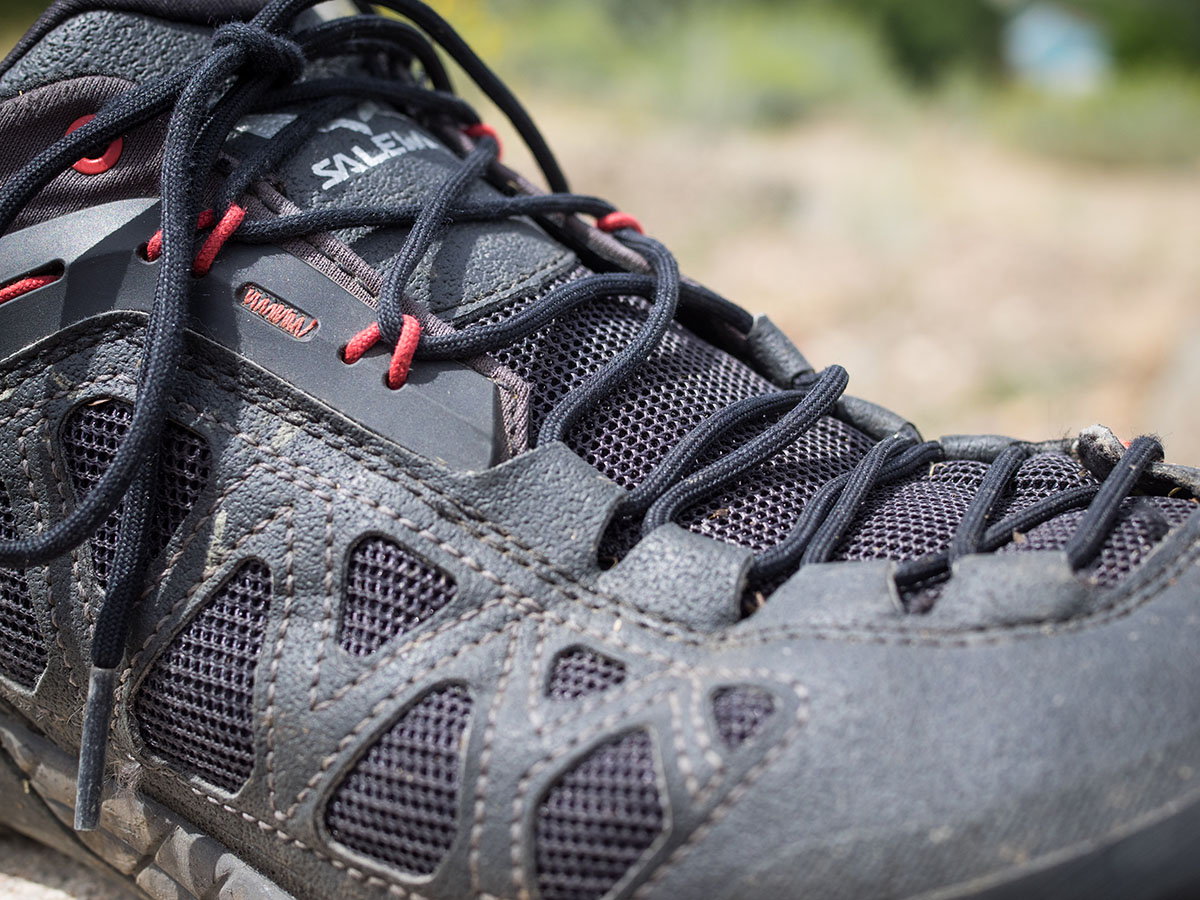
The Salewa Firetail 3 is offered in both a Gore-Tex (GTX) and non-GTX version. Being one of the few approach shoes offered with a Gore-Tex liner, we opted for the waterproof GTX version. For quick douses while hopping across a creek, the Gore-Tex will keep your feet dry and happy. However, if you’re forced to do an extended river crossing to get to your climb, be prepared to have wet feet. As well as Gore-Tex repels water, it also tends to hold in moisture when saturated. Your underwater traction will be spot on, but the waterproof lining will give you a soggy feeling that may last for the rest of the day.
Given the low ankle cut of this shoe, we don’t think the Gore-Tex offers a significant enough upside the merit the extra cost or weight. The non-GTX Firetail 3 is $20 less and about 10 grams lighter. Similar to climbing shoes, approach shoes rarely get submerged, so the extra expense of the waterproof lining does not seem worth it under most circumstances. For long days out in the mountains, we prefer the quicker drying, lighter, and cheaper non-GTX version.
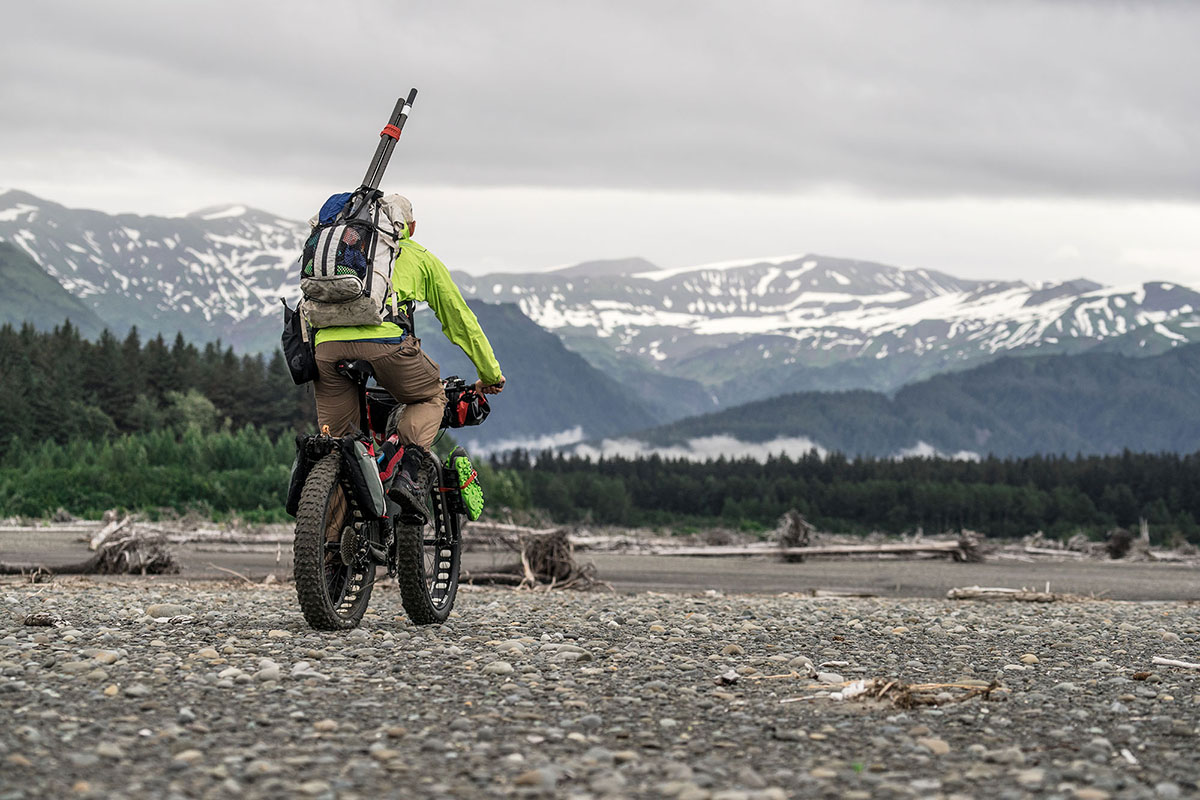
With a weight of 28.2 ounces for a pair of the Gore-Tex model, the Firetail 3 is lightweight considering its technical abilities and durable structure. Provided we kept the upper material from absorbing too much moisture (a serious challenge in Alaska), the Firetail felt agile and is light enough to comfortably hang on a harness or throw in a pack while climbing. Opting for the non-waterproof model will knock the weight down to 27.6 ounces, which is competitive with big sellers like the 27.8-ounce Scarpa Crux and 26.4-ounce Five Ten Guide Tennie.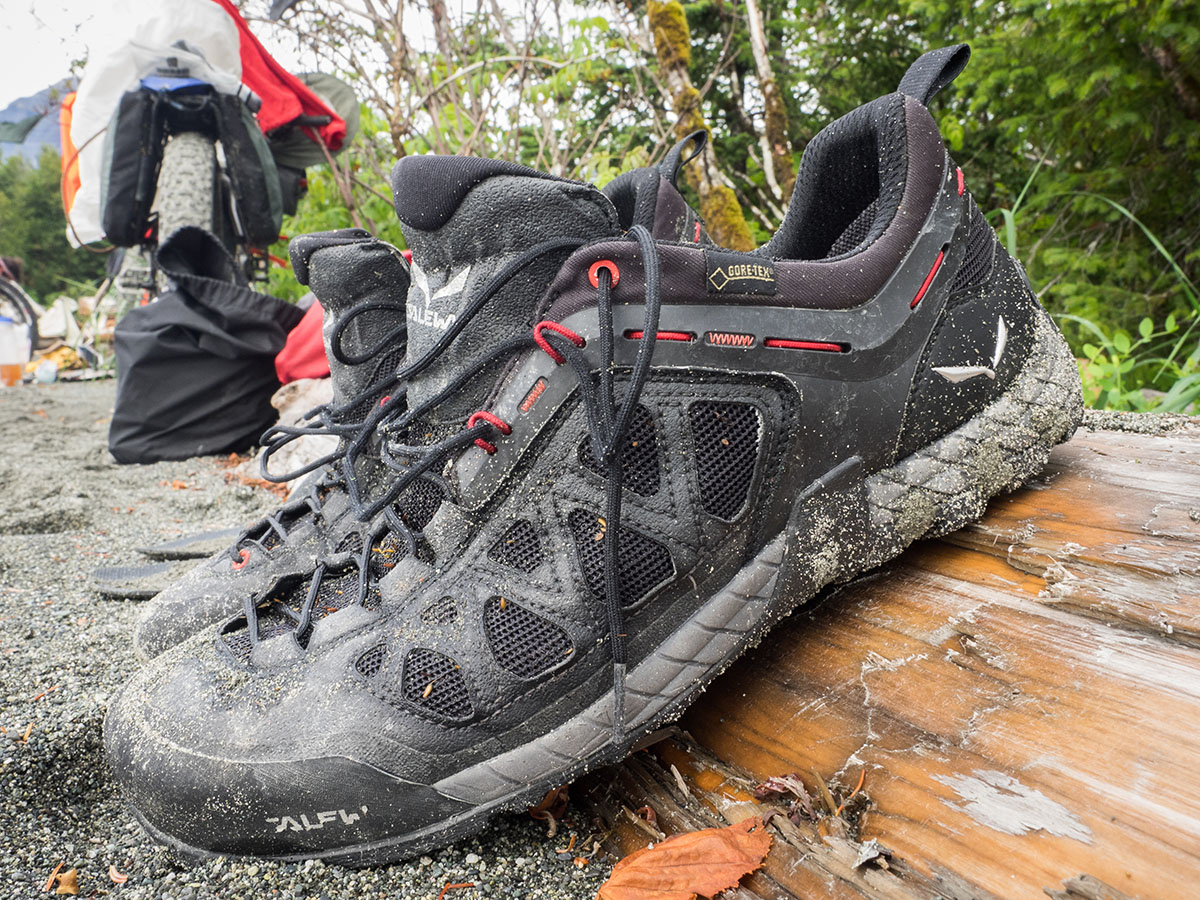
You can shave even more weight by going with a minimalist approach shoe like the 21.2-ounce Arc’teryx Acrux SL GTX, but that involves sacrificing some of the stability and cushioning of the Firetail 3. At the high end of the spectrum is an approach shoe like the 34-ounce La Sportiva Boulder X, but that type of model is too stiff and heavy for covering long distances. For these reasons, we think the Firetail 3 hits a nice balance of weight and performance.
Our U.S. size 12s were true to form and felt comfortable right out of the box. Often times when sizing approach shoes, we go down a ½ size to give a tighter and precise fit for scampering and easy climbing. But due to the Firetail 3’s lacing system, sizing down wasn’t needed as we could easily adjust the feel and comfort of the shoe under changing circumstances. Overall comfort is excellent, as the shoe offers good support for those with high arches. Additionally, the underfoot cushioning seems to be strong for eliminating foot fatigue after long days.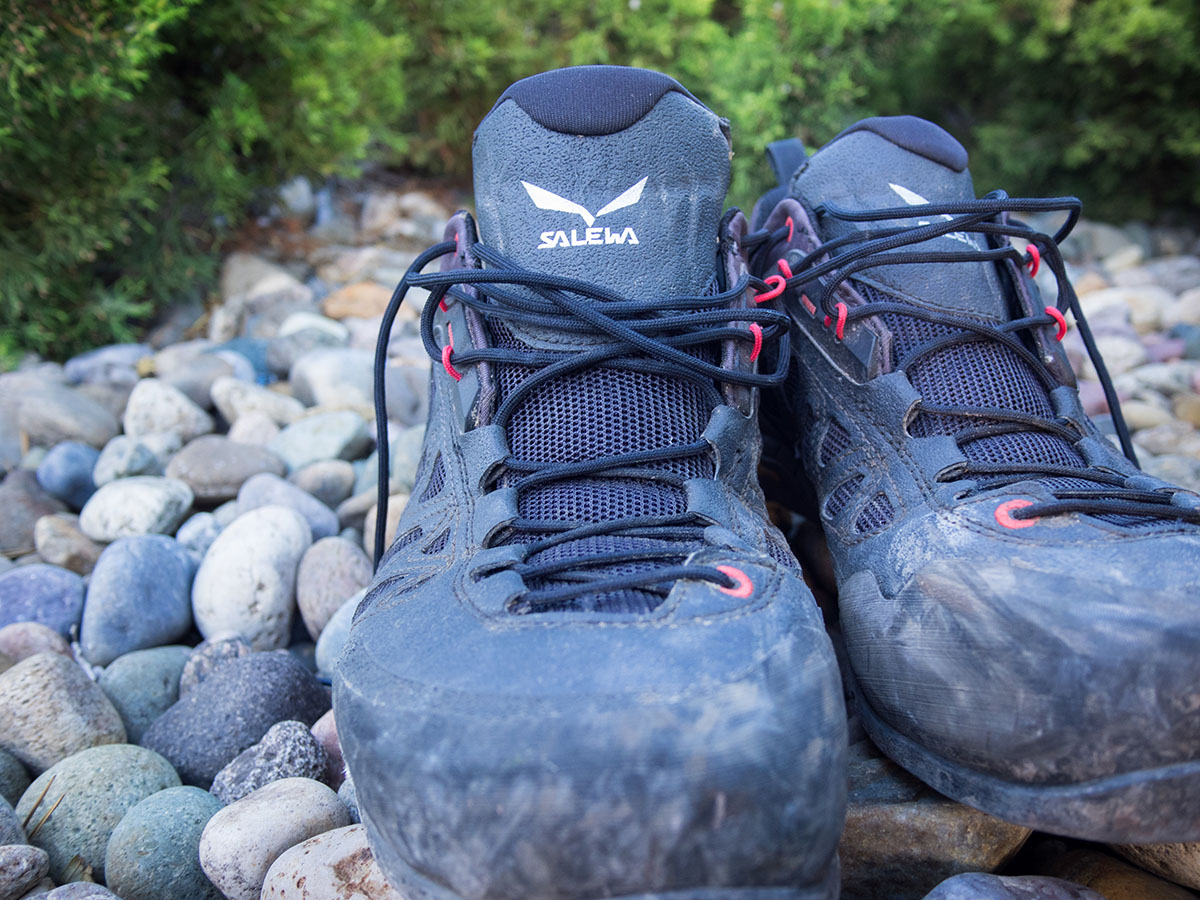
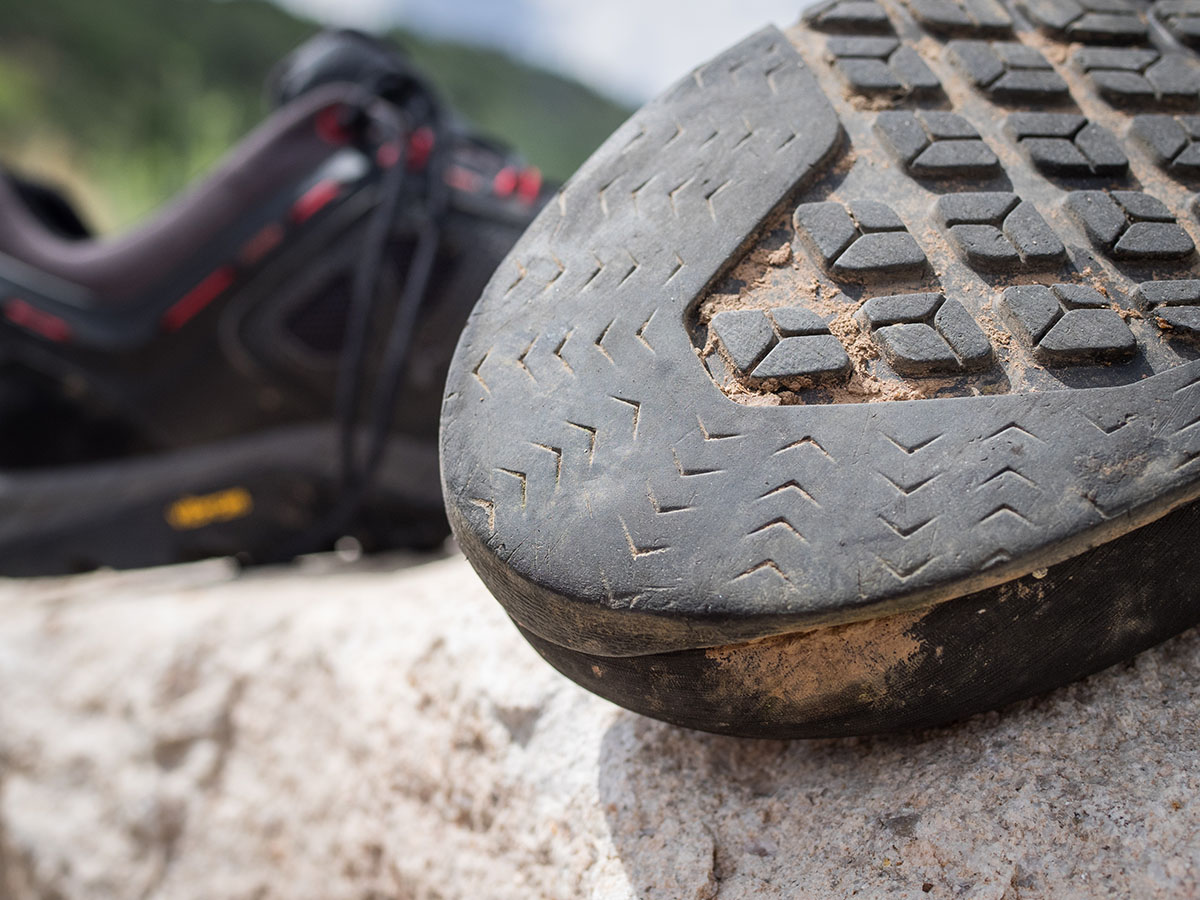
| Shoe | Price | Weight | Waterproof | Upper | Outsole |
|---|---|---|---|---|---|
| Salewa Firetail 3 GTX | $159 | 27.6 oz. | Yes | Mesh and textile | Vibram Reptail w/MegaGrip |
| Five Ten Guide Tennie | $120 | 26.4 oz. | No | Leather | Stealth C-4 |
| La Sportiva Boulder X | $110 | 34 oz. | No | Leather | Vibram Idro-Grip |
| Scarpa Crux | $119 | 27.8 oz. | No | Suede | Vibram Vertical Approach |
| Arc'teryx Acrux SL GTX | $200 | 21.2 oz. | Yes | Leather and mesh | Vibram Ibex |
We think the Salewa Firetail 3 lands in a desirable place in the approach shoe market. It’s a solid all-rounder that can handle rough use, climbs reasonably well over a variety of terrain, and has a great fit for long hikes. The 27.6-ounce non-waterproof Firetail 3 is significantly lighter and more nimble than burly approach shoes like the La Sportiva Boulder X (34 ounces) and Scarpa Zen (30 ounces), but is more durable and better at climbing than the Vasque Grand Traverse.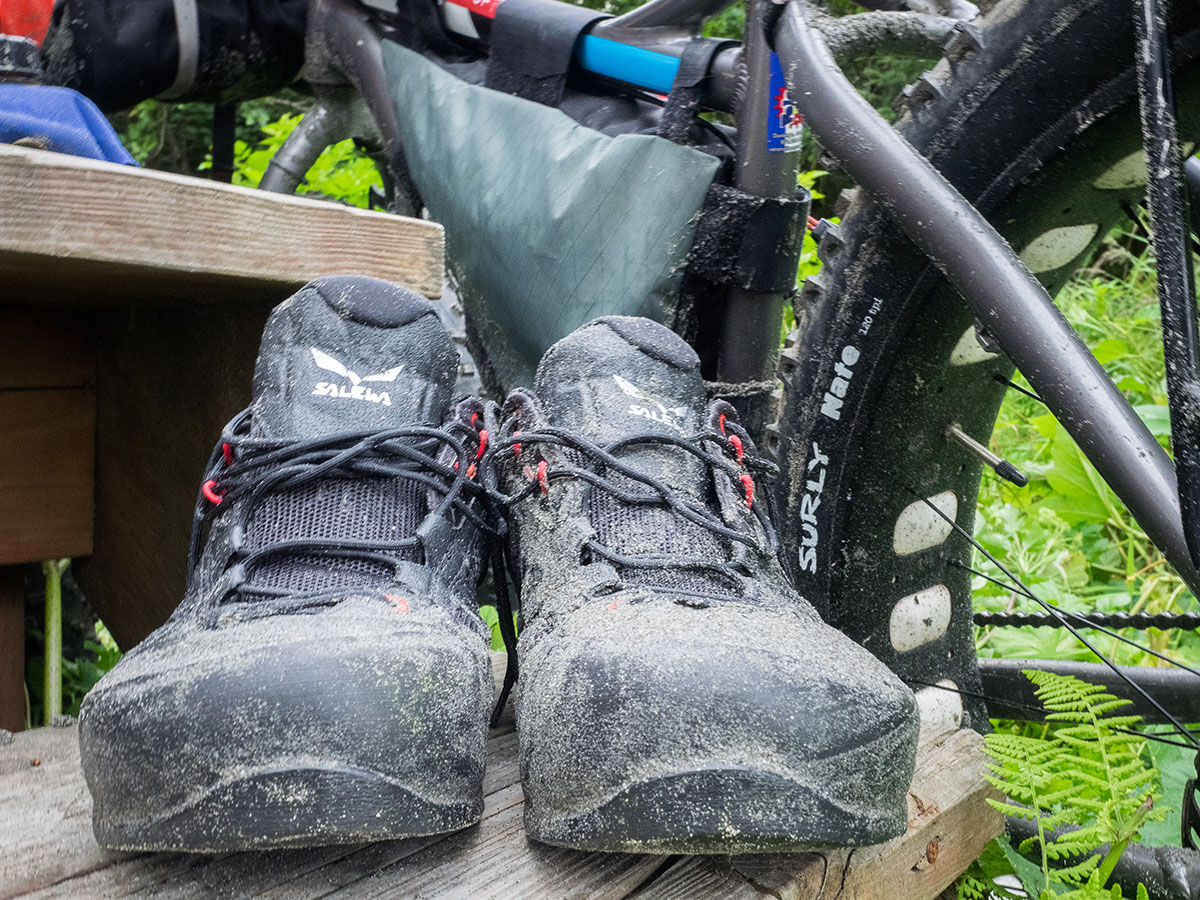
Among generalist approach shoes, perhaps the biggest competitor to the Firetail 3 is Five Ten’s Guide Tennie. The Five Ten’s are a similar weight but offer better climbing performance, particularly in cracks. Where they fall short of the Firetail is in traction while hiking on slippery and wet terrain (for more information on the Guide Tennie, check out our in-depth review). If you’re on the fence between the two, the Five Ten is likely the better true approach shoe that mixes climbing and hiking attributes, but we love the Firetail 3 for rough weather, alpine hiking in the snow and wet, and long approaches where its lightweight construction really shines.